
This is our hotel - Hotel Heritage - Very nice hotel just of the main market square.
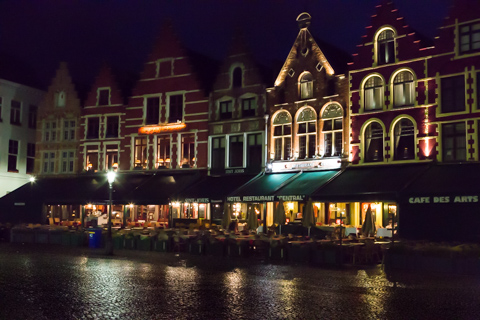
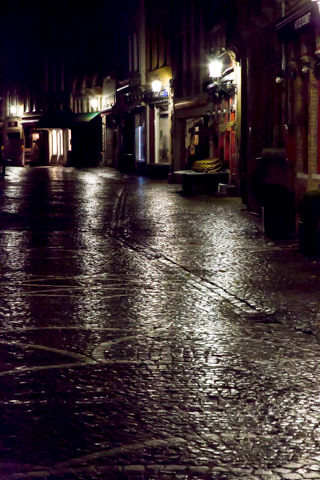
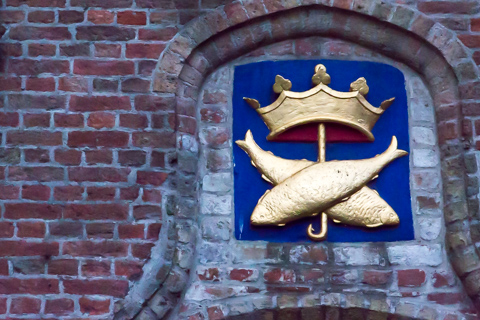
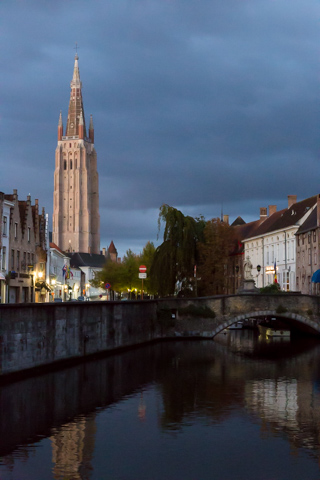
This is a spot called Rozenhoedkaai - from this spot we watched the sun rise. In the 18th century, the Rozenhoedkaai came as a name to use for the canal. The reason was that stalls were lined up at that place that sold rosaries.
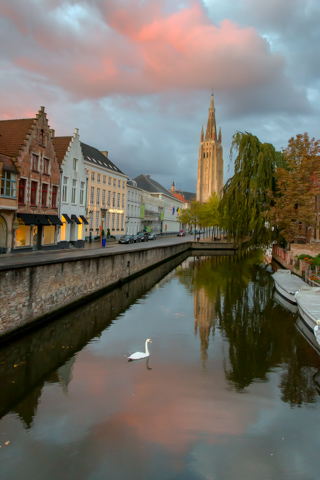
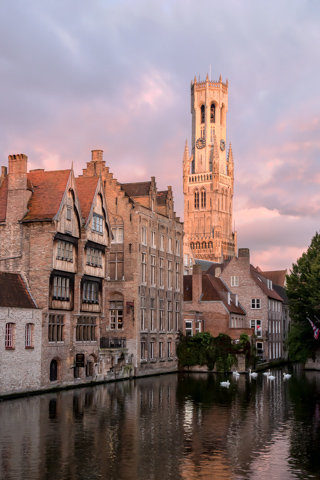
Bruges's most famous landmark is its 13th-century belfry, housing a municipal carillon comprising 48 bells. The city still employs a full-time carillonneur, who gives free concerts regularly.

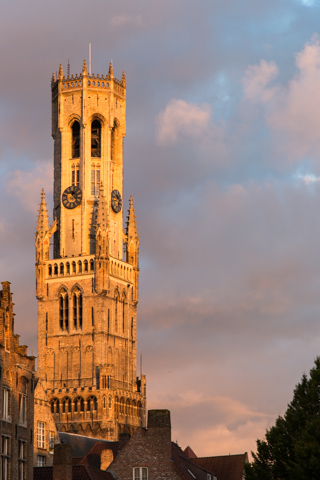
The octagonal upper stage of the belfry was added between 1483 and 1487, and capped with a wooden spire bearing an image of Saint Michael, banner in hand and dragon underfoot. The spire did not last long: a lightning strike in 1493 reduced it to ashes and destroyed the bells as well. A wooden spire crowned the summit again for some two-and-a-half centuries, before it, too, fell victim to flames in 1741. The spire was never replaced again, thus making the current height of the building lower than in the past; but an open stone parapet in Gothic style was added to the rooftop in 1822.


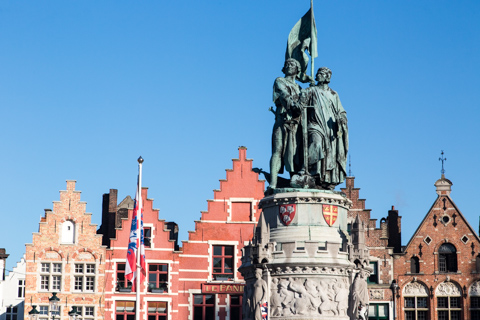
In 1302 after the massacre of the French garrison in Bruges by the members of the local Flemish militia, the population joined forces with the Count of Flanders against the French, culminating in the victory at the Battle of the Golden Spurs. The statue of Jan Breydel and Pieter de Coninck, the leaders of the uprising, can still be seen on the Big Market square.

Just one of the homes with ivy framing the windows.
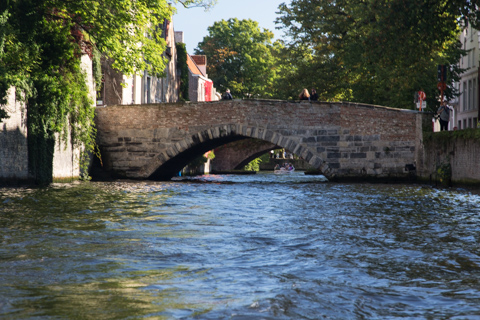
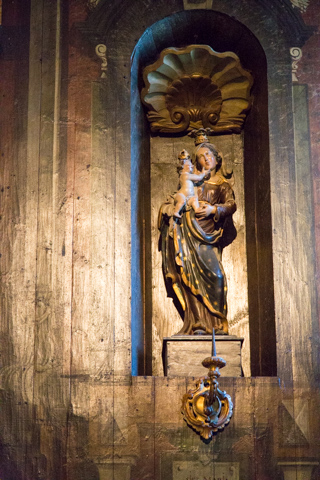
This was a statue in niche in a building at one of the intersections
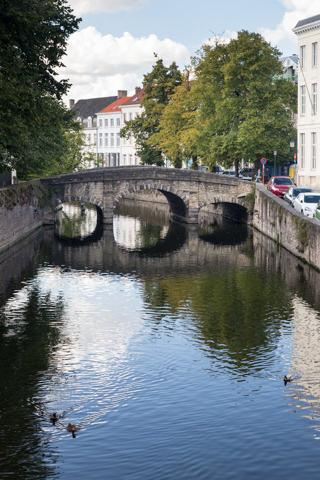
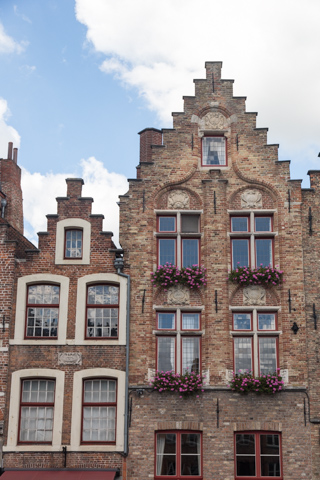
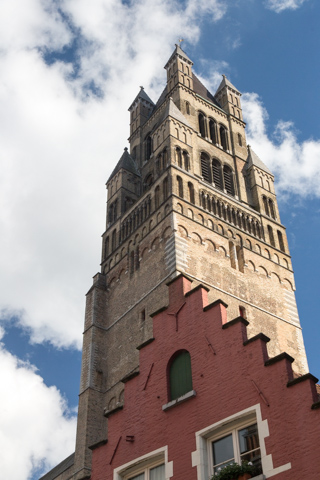
The Sint-Salvator Cathedral, the main church of the city, is one of the few buildings in Bruges that have survived the onslaught of the ages without damage. Nevertheless, it has undergone some changes and renovations. This church was not originally built to be a cathedral; it was granted the status in the 19th century. Since the 10th century the Sint-Salvator has been a common parish church.
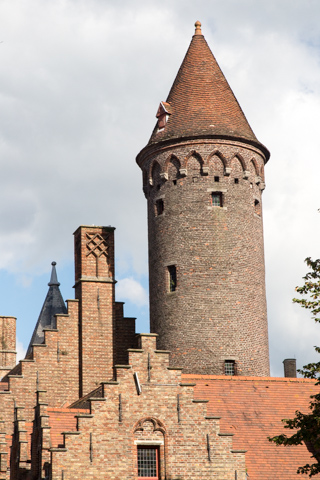
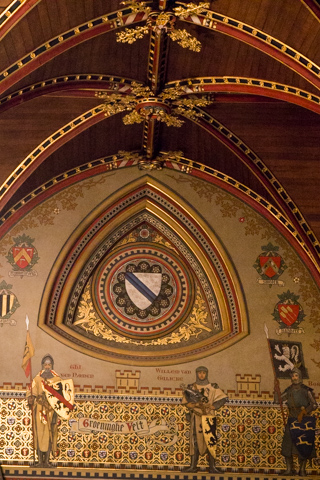
In the main hall, original 14th century consoles and imposing portraits of rulers dominate the room. Contemporary multimedia sheds light on the construction history of the Town Hall and Burg Square. Anyone interested in the power struggle between citizens and the rulers should certainly visit the Gothic Hall and the Historic Hall. The Bruges town hall was built in 1376, which makes it one of the oldest town halls in the Low Countries. The city has been ruled from here for over 600 years.
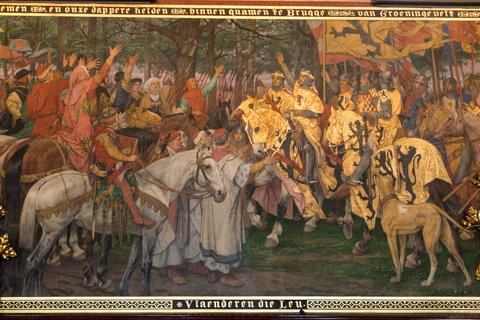
The gothic hall is a work of art in itself, with its splendid 19th century murals and a colorful vaulted ceiling. The painted figures depict Bruges' glorious past. The theme 'citizens and government' sheds light on the eternal power struggle between the city government, the sovereigns, and the people of Bruges.
